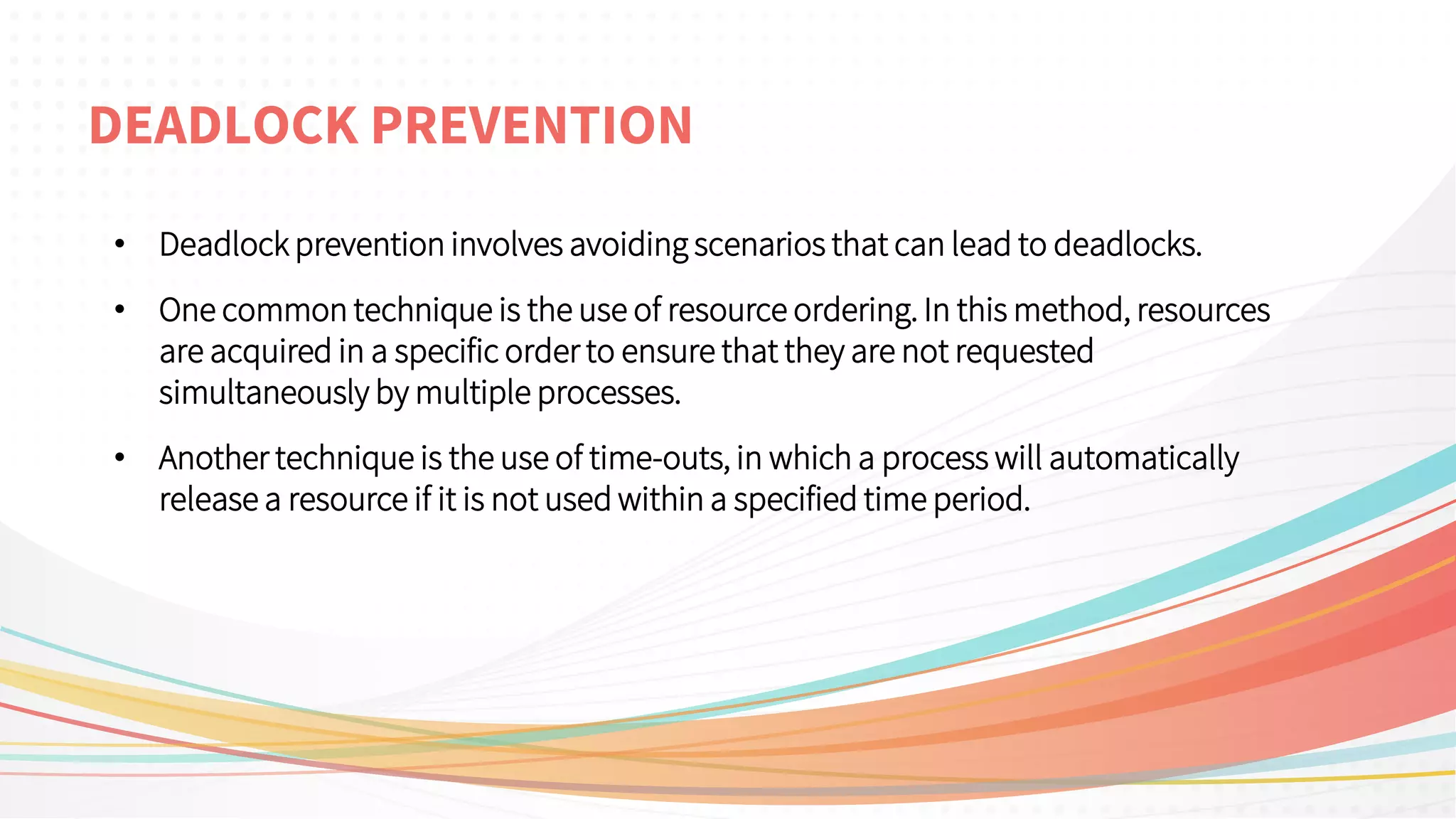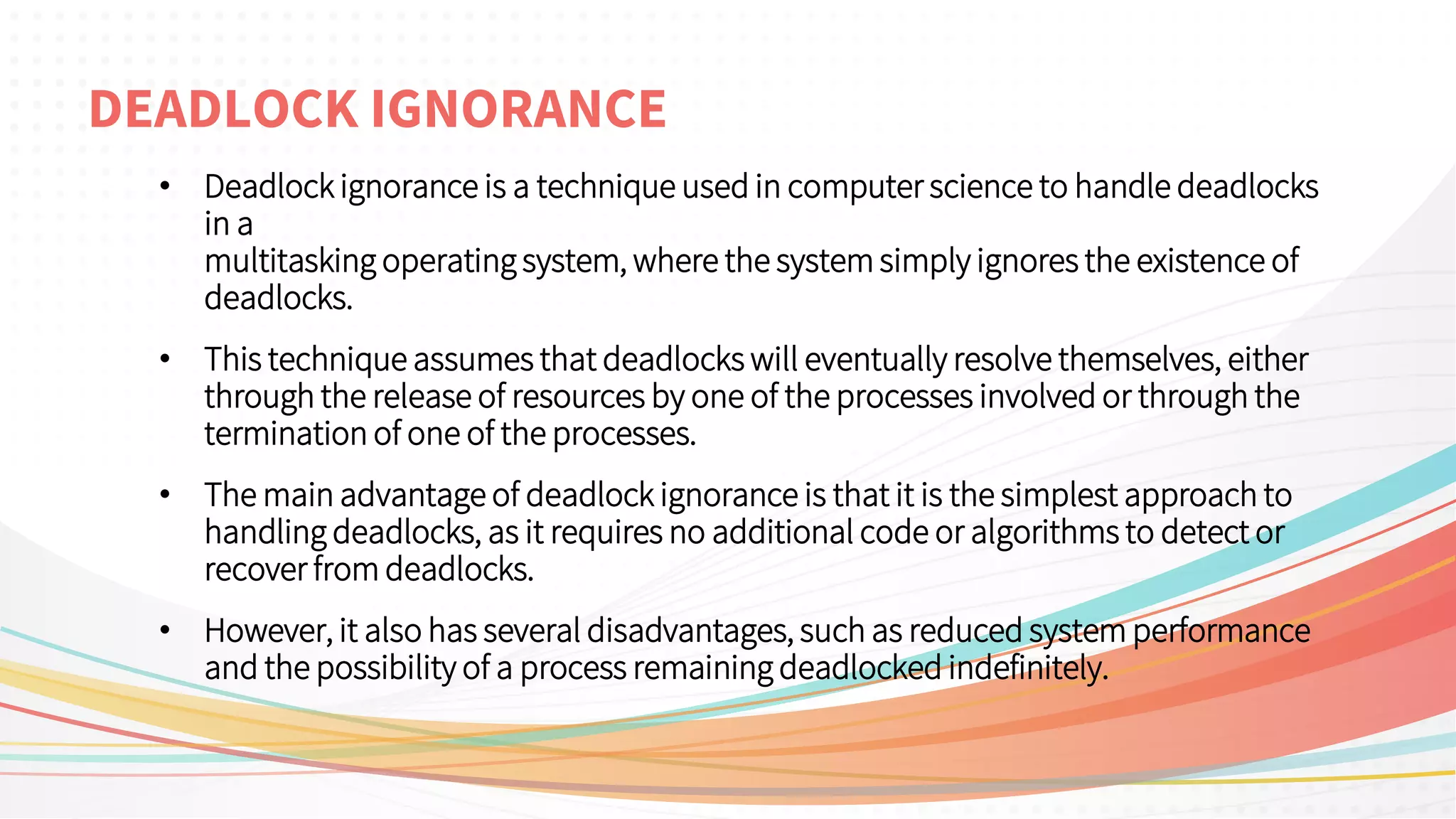The document discusses different techniques for handling deadlocks in computer systems, including deadlock prevention, avoidance, detection and recovery, and ignorance. Deadlock prevention uses strict resource ordering or timeouts to avoid deadlock situations. Deadlock avoidance uses algorithms like the banker's algorithm or wait-for graphs to detect potential deadlocks and prevent resource allocations that could lead to deadlocks. Deadlock detection and recovery periodically checks for deadlocks using resource allocation graphs or timeouts, terminating processes to resolve any deadlocks found. Deadlock ignorance simply ignores deadlocks, assuming they will resolve on their own over time.








